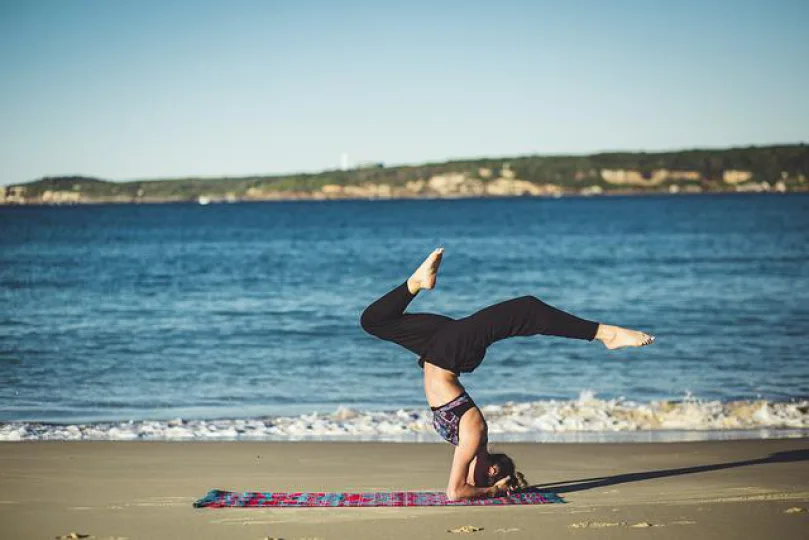Beginning a fitness journey can feel overwhelming, but with the right approach, it can also be exciting and transformative. A balanced workout routine is crucial for beginners who want to build strength, endurance, flexibility, and overall health. Whether you're looking to lose weight, gain muscle, or just improve your well-being, understanding how to create an effective and sustainable workout plan is essential.
Table of Contents
Understanding the Basics of a Balanced Workout Routine
A balanced workout routine incorporates various types of exercises, including strength training, cardiovascular activities, and flexibility training. This ensures that all aspects of physical fitness are addressed. Below are important components to include in a balanced workout routine for beginners:
Strength Training
Strength training involves lifting weights or using resistance to build muscle mass and strength. It's important to focus on all major muscle groups—legs, arms, chest, back, and core. Here are some tips for incorporating strength training:
- Start with bodyweight exercises: Before jumping into weights, get comfortable with exercises like push-ups, squats, and planks.
- Use resistance bands: These are great tools for beginners and can be easily adjusted for difficulty.
- Gradually increase weight: Once you feel stronger, start incorporating dumbbells or kettlebells into your exercises.
Cardiovascular Training
Cardio workouts are vital for improving heart health, stamina, and burning calories. Activities can range from running and cycling to swimming and dancing. To enrich your cardiovascular training, consider the following:
- Find activities you enjoy: This will help you stick to your routine. Whether dancing, biking, or jogging, enjoy your workout!
- Mix up intensities: Consider high-intensity interval training (HIIT) to maximize your workout's efficiency. Alternate short bursts of maximum effort with recovery periods.
- Set goals: Whether it's running a certain distance or improving your pace, setting specific goals can motivate your cardio sessions.
Flexibility and Mobility Training
Flexibility training improves overall movement quality and prevents injuries. Stretching can be incorporated at the end of a workout but consider also dedicating time to it in a separate session:
- Static stretching: Hold stretches for 20-30 seconds after a workout to enhance muscle recovery.
- Dynamic stretching: Incorporate dynamic stretches before workouts to prepare your body for action.
- Yoga or Pilates: These practices emphasize flexibility and can improve core strength as well.
Creating a Weekly Schedule
Establishing a weekly workout schedule can help you stay consistent and balanced. A simple example plan for beginners could look like this:
| Day | Activity |
|---|---|
| Monday | Strength training (upper body) |
| Tuesday | Cardio (30 minutes) |
| Wednesday | Strength training (lower body) |
| Thursday | Rest or light yoga |
| Friday | Strength training (full body) |
| Saturday | Cardio (hiking or fun activity) |
| Sunday | Active rest (stretching or walking) |
Tracking Progress
To stay motivated and see how far you've come, tracking your fitness journey is invaluable:
- Keep a workout journal: Write down your workouts, weights, reps, and how you felt.
- Use apps: Many fitness apps can help you monitor your workouts and offer guidance.
- Create milestone goals: Setting and achieving smaller goals can provide motivation and a sense of accomplishment.
Key Takeaways
- A balanced workout routine includes strength training, cardio, and flexibility exercises.
- Choose activities you enjoy to make fitness enjoyable and sustainable.
- Establish a structured weekly schedule to stay consistent.
- Track your progress to stay motivated and accountable.
FAQ
1. What is a balanced workout routine?
A balanced workout routine includes a variety of exercises targeting strength, cardiovascular endurance, and flexibility to support overall fitness.
2. How often should beginners work out?
Beginners should aim for at least 150 minutes of moderate aerobic activity and include strength training exercises on two or more days per week.
3. Can I lose weight with strength training alone?
Yes, strength training can help you lose weight, especially if it's combined with a healthy diet. It builds muscle, which burns more calories at rest.
4. What types of cardio are best for beginners?
Walking, cycling, swimming, and dancing are excellent cardiovascular activities for beginners due to their low impact and accessibility.
5. How can I stay motivated to work out?
Set achievable goals, vary your workouts, and consider finding a workout buddy or joining a fitness community for support and motivation.
6. Is flexibility training necessary?
Yes, flexibility training helps maintain a full range of motion, enhances performance, and reduces the risk of injuries.
7. What should I do if I miss a workout?
If you miss a workout, don’t be discouraged. Just get back on track during your next scheduled workout, and remember consistency is key.
Conclusion
Creating a balanced workout routine as a beginner sets the foundation for a healthier lifestyle. By understanding the different components of fitness, developing a structured schedule, and tracking your progress, you’ll not only enhance your physical capabilities but also cultivate a positive relationship with exercise. Remember, the journey to fitness is a lifelong adventure; make it enjoyable and rewarding!



